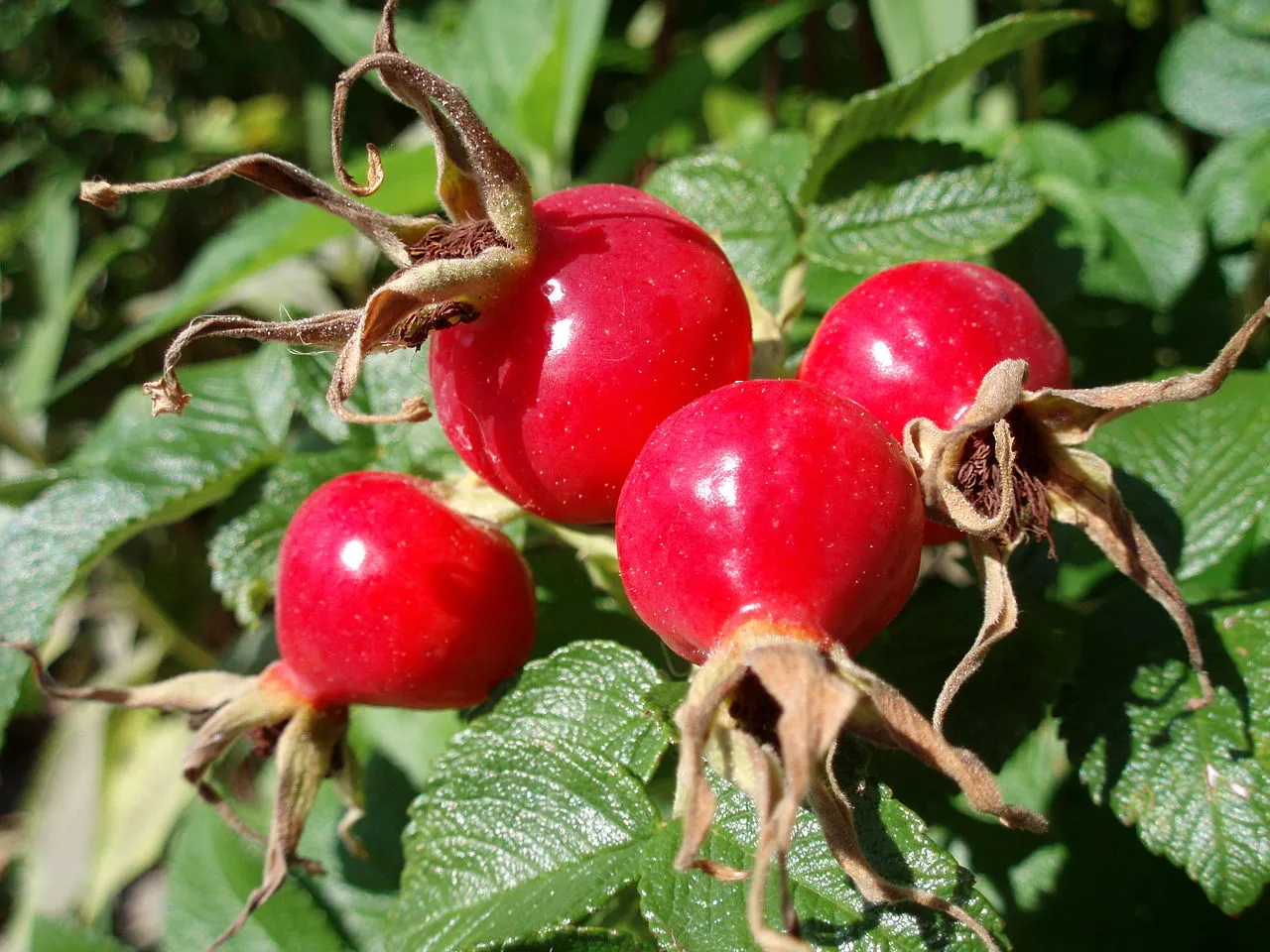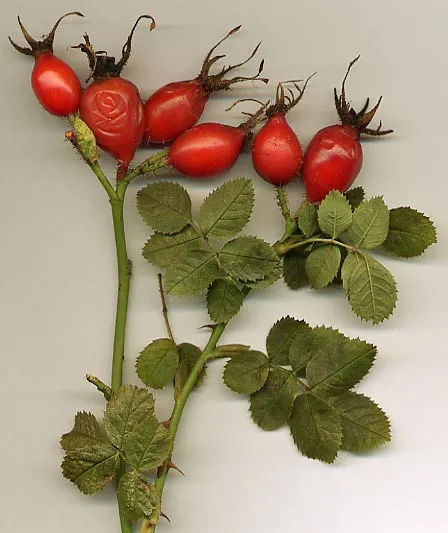Not only are they beautiful....

photo credit: @twiceuponatime
...but very good for you too!

photo credit: @onceuponatime

Rose Hip
Use
The rose hip, also called rose haw and rose hep, is the accessory fruit of the rose plant. It is typically red to orange, but ranges from dark purple to black in some species. Rose hips begin to form after successful pollination of flowers in spring or early summer, and ripen in late summer through autumn.
Rose hips are used for herbal teas, jam, jelly, syrup, rose hip soup, beverages, pies, bread, wine, and marmalade. They can also be eaten raw, like a berry, if care is used to avoid the hairs inside the fruit.
A few rose species are sometimes grown for the ornamental value of their hips, such as Rosa moyesii, which has prominent large red bottle-shaped fruits.
Rose hips are commonly used as a herbal tea, often blended with hibiscus, and an oil is also extracted from the seeds. They can also be used to make jam, jelly, marmalade, and rose hip wine. Rose hip soup, "nyponsoppa", is especially popular in Sweden. Rhodomel, a type of mead, is made with rose hips.
Rose hips can be used to make pálinka, the traditional Hungarian fruit brandy popular in Hungary, Romania, and other countries sharing Austro-Hungarian history. Rose hips are also the central ingredient of cockta, the fruity-tasting national soft drink of Slovenia.
Nutrients and phytochemicals
Wild rose hip fruits are particularly rich in vitamin C, containing 426 mg per 100 g.[3] However, RP-HPLC assays of fresh rose hips and several commercially available products revealed a wide range of L-ascorbic acid (vitamin C) content, ranging from 0.03 to 1.3%.[4]
Rose hips contain the carotenoids beta-carotene, lutein, zeaxanthin and lycopene, which are under basic research for a variety of potential biological roles.[5][6] A meta-analysis of human studies examining the potential for rose hip extracts to reduce arthritis pain concluded there was a small effect requiring further analysis of safety and efficacy in clinical trials.[7] Use of rose hips is not considered an effective treatment for knee osteoarthritis.[8]
https://en.wikipedia.org/wiki/Rose_hip

photo credit: wikipedia.org

Finally,
in honor of @twiceuponatime - who I heard through the grape vine has been drinking quite heavily lately (whereas myself, now that I am going to the gym 5 times a week, I haven't touched a drop in a month) - I present to you the following wine recipe from www.motherearthliving.com
Rosehip Wine Recipe
Hips, or heps, are the fruit of the rose and are traditionally gathered after the first frost of November. This is a most beneficial wine to make, as the ripened hips are rich in vitamin C.
• 3 1/4 pounds ripe rosehips
• 3 pounds sugar
• 1 lemon
• 1 Camden tablet (a handy form of sulfur dioxide for disinfecting and sterilizing)
• 1 teaspoon pectin enzyme
• 1 gallon water
• Wine yeast
• Yeast nutrient

photo credit: wikipedia.org
Put the washed hips into a vessel and crush well with a mallet or similar implement.
Cover with 1 gallon of cold water, stir in the crushed Camden tablet and pectin enzyme and leave to steep for 24 hours.
Draw off 2 pints of the liquid, heat just to boiling point and dissolve the sugar in it.
Return this syrup when cooled to the rosehip pulp, together with the yeast, nutrient and juice of the lemon.
Cover the vessel and leave in a warm place to ferment for 5 days, stirring twice daily.
Strain the liquid off the pulp, pressing well to extract all the juice, and transfer to a fermenting jar. Fit bung and air-lock and leave to ferment on, racking when the wine is starting to clear.
Cheers!

photo credit: www.theguardian.com

ouzo and out,
@onceuponatime